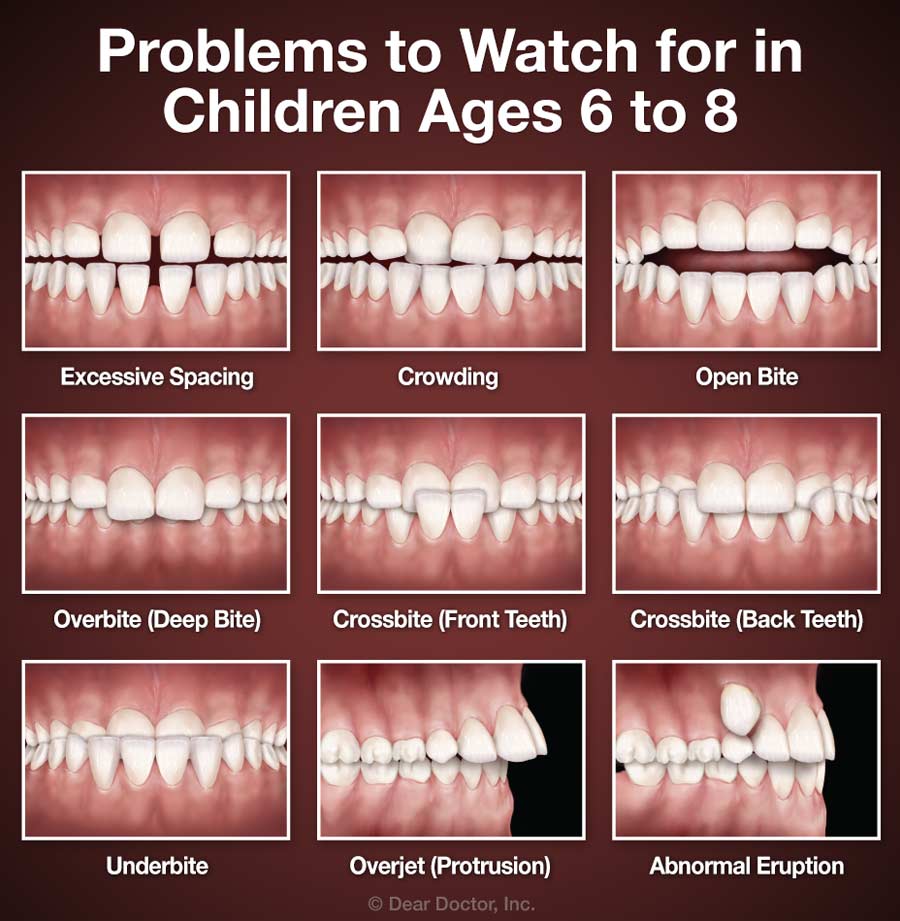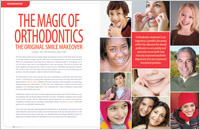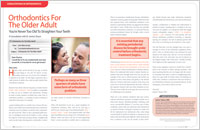If you’ve been contemplating orthodontic treatment for yourself or a loved one, you might be pondering the optimal time to seek advice from an orthodontist. It’s a pertinent question, and the answer encompasses various factors.
According to the American Association of Orthodontics, scheduling an orthodontic evaluation around the age of 7 is recommended. Typically, by this age, the permanent first molars and front teeth have emerged, allowing early detection of potential issues. Most patients are places on annual recall at this stage, but there are some indications for early treatment at this point. No referral from a general or pediatric dentist is necessary for a complimentary orthodontic consultation.
The primary indicator for seeking orthodontic assistance is any uncertainty regarding the alignment of your teeth or the quality of your bite. Sometimes, these issues are glaringly apparent. For instance, difficulty in biting, chewing, or speaking, or visibly protruding, crowded, or misplaced teeth warrant a consultation with an orthodontist. These professionals possess the specialized skills and training required to diagnose and address such concerns.
However, certain conditions may not be as overt. Mouth breathing, teeth clenching or grinding, and discomfort in closing lips could signify the need for orthodontic intervention. Additionally, frequent shifting or sounds from the jaws, or inadvertent biting of the cheek or roof of the mouth, might indicate an underlying orthodontic issue.
Misaligned teeth can also lead to facial imbalances (asymmetry), wherein certain facial features are disproportionate to others. Fortunately, orthodontic treatment often rectifies this problem effectively.
Orthodontics for Children
In addition to general recommendations, specific guidelines exist for children. The American Academy of Orthodontists (AAO) suggests that children undergo an orthodontic examination by age 7 for two primary reasons.
Firstly, there’s a considerable disparity in tooth development at this age, necessitating expertise to discern whether a child has an orthodontic problem or if it’s a normal developmental variation. Secondly, many conditions are more manageable if detected early, leveraging children’s natural growth processes. For instance, a palatal expander appliance can address a crossbite more effectively in children due to their rapid jaw growth.
Numerous childhood issues, such as early or delayed baby tooth loss, persistent thumb sucking, tongue thrusting, and mouth breathing, may benefit from orthodontic intervention. If any of these symptoms are observed, a visit to the orthodontist is warranted, although early screening doesn’t necessarily mandate immediate treatment.

Orthodontics for Adults
While it’s clear when children should undergo orthodontic evaluation, the timing for adults might be less obvious. If you find yourself covering your mouth when smiling or feeling self-conscious about your smile, it might be time to consider orthodontic treatment.
Contrary to common perception, orthodontics isn’t limited to children. In fact, approximately one in five orthodontic patients today is an adult, as per the AAO. Advancements in orthodontic technology, such as clear aligners and translucent ceramic brackets, offer less conspicuous alternatives to traditional metal braces, catering to diverse preferences.
Furthermore, orthodontic treatment benefits extend beyond aesthetics. Well-aligned teeth are easier to clean, maintain, and less susceptible to wear. A proper bite facilitates eating and speaking, contributing to overall oral health and longevity of teeth.
In conclusion, delaying orthodontic treatment when needed serves no purpose, as it can enhance both oral health and confidence at any age.
Related Articles

The Magic of Orthodontics
Proper alignment of the teeth is basic to “Smile Design.” Their position dictates how they work together and affects the way you look and smile. Only orthodontic treatment can move teeth into the right position. Simply put, when things look right, they probably are right. Learn the basics of smile analysis and design and whether the magic of orthodontics will work for you…

Orthodontics for the Older Adult
Healthy teeth can be moved at any age, so there’s no such thing as “too old” for braces. In fact, nowadays about one out of every five orthodontic patients is an adult. Yet this figure represents only a small portion of adults who could actually benefit from orthodontic treatment…

Early Orthodontic Evaluation
Early detection of orthodontic problems in young children may make it easier to correct those problems in the long run. Waiting until all of the permanent (adult) teeth have come in, or until facial growth is nearly complete, may make correction of some problems more difficult or even impossible. An early childhood orthodontic evaluation can yield excellent results…
